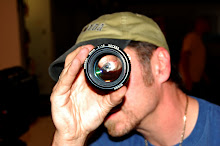Eleven years ago today I heard a voice
on CNN that I immediately recognized. It reminded me that the shuttle
Columbia was landing that morning. It was the voice of Rick Husband,
commander of STS107. Most people would not likely know the name of a
space shuttle commander, let alone his voice. Kalpana Chawla, the
first astronaut from India spoke next, and as I grabbed my coffee and
focused on the screen my stomach sank. The vivid graphics on the
screen told the story. There had been a terrible accident.
15 days, 22 hours and 20 minutes before
the shuttle Columbia disintegrated on reentry a piece of foam the
size of a briefcase tore a hole in the skin of its wing. All were
lost. All seven of this crew that I was fortunate to get to know
through my work on Space Research and You. “SPRAY” was an
educational project created as part of NASA's outreach program, and
one that the crew took time out of their training to be a part of. A
project that focused on the important science this dedicated crew was
conducting on this 28th mission of the second space
shuttle to join the fleet. A traveling museum presentation with the
goal of inspiring a new generation of astronauts, pilots, engineers,
scientists and researchers.
This inspiration, and the technology
that is born from manned space flight, is the result that President
Kennedy envisioned some 40 years before February 1st,
2003. It is the reason we go. The very idea of manned space flight is
the singular most important program in modern history. And the
science research being done on STS107 was intended to benefit all
mankind. Cancer research, osteoporosis, Ozone studies, the physics of
fluids and the effects of zero gravity on the human body were just
some of the more than 80 experiments being done on STS107. Six
student-designed experiments were among the research that, despite
the tragic loss of the crew and craft, an estimated 70 percent of the
scientific objectives were achieved and the results downlinked to
earth. This data continues to contribute to our knowledge base and
stands as an eternal gift from seven individuals that dedicated their
lives to science and the space program.
SPRAY was truly “edutainment”. Some
of the last video ever taken of this crew explaining their research
and what it is like to travel in space was interspersed with a
co-host no other than R2D2. The actual R2D2 mind you. Many scientists
behind the 80 plus experiments packed into the payload bay of STS107
were interviewed and accompanied by animations, diagrams, images, and
audience participation elements. An educator-actor would guide groups
of students young and old alike through an exploration of space
science. SPRAY could not live on after the disaster. It did win an
international award for the innovative use of technology. The
ComputerWorld Smithsonian Honors Program award has a special spot on
my wall and includes the STS107 mission patch and a photograph of
the crew.
That same photograph was being shown on
CNN and every other network by the time that it started to sink in.
The crew was gone. Zero chances of survival. All the talent and guts
and experience in that cockpit during reentry could not overcome the
devastating effects of super hot gases entering the left wing of the
craft through that seemingly small hole in the carbon fiber tiles.
For the final 5 or so minutes the technicians in mission control knew
there were problems. It started with a series of failed sensors in
the left wing. From the ground they calmly worked the problem, all
the while 3000 degree gases were penetrating the leading edge of the
left wing of the space shuttle Columbia.
It was 200,000 feet over Texas and
still traveling about 15,000 miles an hour when commander Rick
Husband calmly acknowledged the information being passed to him from
the ground. People on the ground from Texas to California reported
seeing debris falling from the glowing shape of the shuttle entering
the earth's atmosphere. The crew certainly saw the plasma glowing red
and encapsulating the craft. Once that heat penetrated those tiles
there was nothing that could be done. In fact, once the shuttle
started its descent nearly an hour before, the end was inevitable.
That day the world lost Commander Rick
Husband, Pilot William McCool, Payload Commander Michael Anderson,
and Mission Specialists Ilan Ramon, Kalpana Chawla, David Brown and
Laurel Salton Clark.
Eleven years later I feel just as sad.
For the crew and their families. For the science community. For the
countless young minds that could have been inspired by Space Research
And You. And eleven years later, I am grateful for having such an
experience as working on that particular project, as well as the many
science education projects to follow.
My special thanks to Brad and Sean
McClain, whose vision and passion for science education conceived and
made possible Space Research And You. My thanks also to Nino Del
Padre and Jon Allegrezza, with whom I worked on this project.









